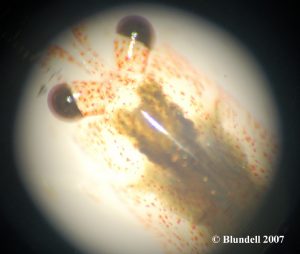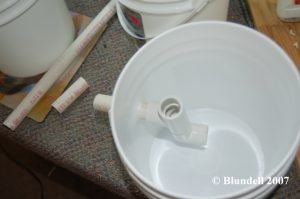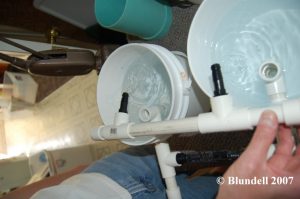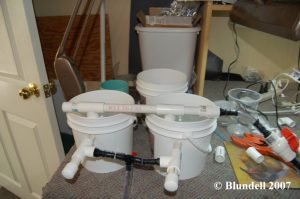 The future of marine ornamental aquaculture is headed towards providing captive raised specimens to supply the hobby. But wait, what if we never get there? Hmmm, wait again, what if we are already there? It appears that the answers to many of the questions hobbyists have (and have had for years) are right around the corner.
The future of marine ornamental aquaculture is headed towards providing captive raised specimens to supply the hobby. But wait, what if we never get there? Hmmm, wait again, what if we are already there? It appears that the answers to many of the questions hobbyists have (and have had for years) are right around the corner.
Background
Just 6 months ago I was conversing with some fellow research biologists and we were discussing the future of ornamental aquaculture. That isn’t anything new. However, this time the discussion moved ahead a bit further as my research lab received funding to investigate the current situation of larval shrimp rearing systems. Little did I know at the time just how much would change in this field during the following 6 months.

The Aquatic & Terrestrial Research Team is now growing larval shrimp and using macroscopic photography to measure growth rates of larvae.
The Most Recent Conceptual Developments
During 2007 a number of articles related to ornamental invertebrates were published. I’ll try to cite them as references below, but due to publication deadlines and release dates I’m not sure how many will be available at the time of submitting this article. These articles continue on from several previous articles, cited below.
In addition to the publication of these articles, another development has taken place. For now, the construction of the Marine Ornamental Fish & Invertebrate Breeders website and discussion forum (www.marinebreeder.org) is a small infrequently used site. However, given the growth in marine breeding efforts the potential for this site is tremendous. Much like the Breeder’s Registry of yore this site provides a place for research scientists and hobbyists to come together and share their experiences.
The Most Recent Tangible Developments
New larval collecting devices (Blundell, 2007) and new food products are helping to raise ornamental invertebrates. In addition to this the development of better grow out facilities are now available. Organizations such as Tropical Marine Centre (UK) and Lusoreef (Portugal) are making great strides in their large scale aquaculture systems. As of July 2007, according to the Tropical Marine Centre’s website (http://www.tmc-ltd.co.uk/) they have successfully produced hundreds of juvenile cleaner shrimp (Lysmata amboinensis). In fact they have photographs to back up that claim. With the development of a culturing facility for cleaner shrimps (and a strong position in the aquatic industry) this could have huge ramifications in the availability of captive raised specimens. Although in infant stages the potential for this growth is not being overlooked by the author.
However, this article is aimed towards hobbyists so I’ll discuss new developments in that area with examples of home based methods.
Conclusion
The fall of 2007 may be forgotten in the hobby. It is possible that recent efforts to produce aquacultured invertebrates are just another small step in a long project goal.
However, it is also possible that the fall of 2007 will serve as the beginning of something great. Recent developments of larval shrimp cultures, the success of commercial breeding programs, and the newly generated interest of aquarists to breed invertebrates may serve together as the big breakthrough. It is possible that recent developments and experiments will allow home-based aquarists to raise many invertebrates to supply the marine aquarium industry. It is also possible that the recent developments will make the need for home-based breeding programs unnecessary. With large scale efforts in the wholesale/industry becoming viable the supply to the industry may be a foot.
Acknowledgements
A special “thank you” is owed to the many researches who contributed to the information cited below. On a side note I appreciate the help and insight many of them provided during personal communications. The Aquatic & Terrestrial Research Team would like to thank their volunteers and research associates for their help with designing and constructing the systems described here. Finally, gratitude is owed to Shane Graber for bringing 3-D design to the forefront of Advanced Aquarist Online Magazine (I personally see much promise from his article).
Author Information
Adam Blundell M.S. works in Marine Ecology, and in Pathology for the University of Utah. He is also Director of The Aquatic & Terrestrial Research Team, a group which utilizes research projects to bring together hobbyists and scientists. His vision is to see this type of collaboration lead to further advancements in aquarium husbandry. While not in the lab he is the former president of one of the Nation’s largest hobbyist clubs, the Wasatch Marine Aquarium Society (www.utahreefs.com). Adam has earned a BS in Marine Biology and an MS in the Natural Resource and Health fields. Adam can be found at [email protected].
References and Suggested Readings
- Betts, P., (2004) “Captive observations of fire shrimp larvae”, Advanced Aquarist Online Magazine, http://www.advancedaquarist.com/issues/nov2004/breeder.htm, 2004. USA.
- Blundell, A., (2004) “Delicatessen Part I: Creating a system for rare and delicate animals”, Advanced Aquarist Online Magazine, http://www.advancedaquarist.com/issues/dec2004/lines.htm, 2004. USA.
- Blundell, A., (2005) “Delicatessen Part II: Displaying a system for rare and delicate animals”, Advanced Aquarist Online Magazine, http://www.advancedaquarist.com/2005/4/lines, 2005. USA.
- Burhans, R., Melechinsky, D., (2004) “Seahorse Husbandry and Propagation”, Scripps Institution of Oceanography. San Diego, CA.
- Calado, R., Narciso, L., Morais, S., Rhyne, A., Lin, J., (2003) “A rearing system for the culture of ornamental decapod crustacean larvae”, Aquaculture 218, 329-339.
- Calado, R., Lin, J., Rhyne, A., Arujo, R., Narciso, L., (2003) “Marine Ornamental Decapods- popular, pricey, and poorly studied”, Journal of Crustacean Biology, Vol 23 I:4.
- Calado, R., Vitorino, A., Dionisio, G., Dinis, M., (2007) “A recirculated maturation system for marine ornamental decapods”, Elsevier. Aquaculture, 263 pg 68-74.
- Calfo, A., Fenner, R., (2003) “Reef Invertebrates, an essential guide to selection, care and compatability”, Reading Trees and Wet Web Media publications, USA.
- Calado, R., Dionisio, G., Dinis, M., (2007) “Decapod crustaceans associated with the snakelock anemone Anemonia sulcata. Living there or just passing by?”, Scientia Marina. 71(2) pg 287-292, Barcelona Spain.
- Gardner, T., (2004) “A Low-Tech Approach to Jellyfish Culture”, Presentation, Marine Ornamentals, Honolulu, HI.
- Graber, S., (2007) “3D Modeling for Aquarium Projects”, Advanced Aquarist Online Magazine, http://www.advancedaquarist.com/2007/3/aafeature2, 2007, USA.
- Rosa, R., Calado, R., Narciso, L., Nunes, M.L., (2007) “Embryogenesis of decapod crustaceans with different life history traits, feeding ecologies and habitats: a fatty acid approach”, Springer-Verlag. Marine Biology, 151: pg 935-947.
- Shimek, R., (2004) “Marine Invertebrates”, T.F.H. Publications. neptune City, NJ. USA
- Sprung, J., (2001) “Invertebrates: a quick reference guide”, Ricordea Publishing. Miami FL., USA
- Zhang, D., Rhyne, A., Lin, J., (2007) “Density-dependent effect on reproductive behaviour of Lysmata amboinensis and L. boggessi (Decapoda: Caridea: Hippolytidae)”, Journal of the Marine Biological Association of the United Kingdom. 87, pg 517-522.





0 Comments